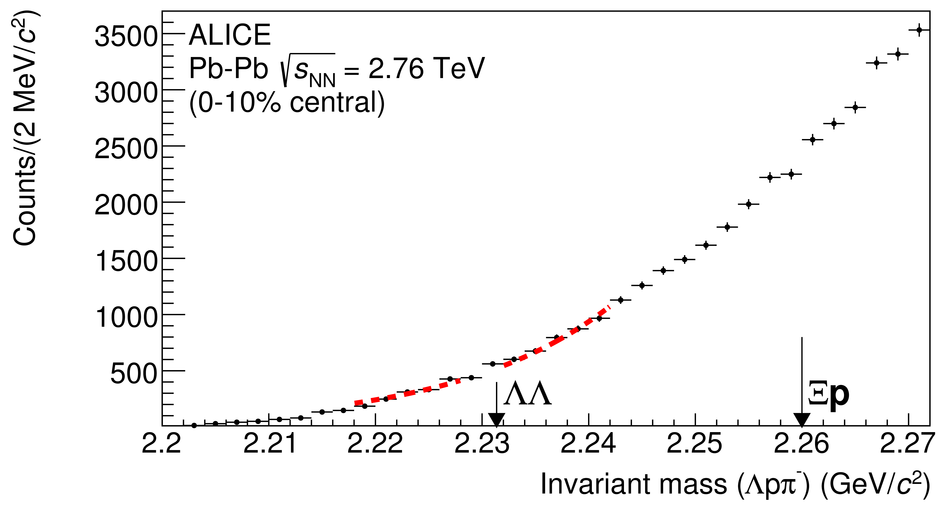We present results of a search for two hypothetical strange dibaryon states, i.e. the H-dibaryon and the possible $\bar{\Lambda\mathrm{n}}$ bound state. The search is performed with the ALICE detector in central (0-10%) Pb-Pb collisions at $ \sqrt{s_{\rm{NN}}} = 2.76$ TeV, by invariant mass analysis in the decay modes $\bar{\Lambda\mathrm{n}} \rightarrow \bar{\mathrm{d}} \pi^{+} $ and H-dibaryon $\rightarrow \Lambda \mathrm{p} \pi^{-}$. No evidence for these bound states is observed. Upper limits are determined at 99% confidence level for a wide range of lifetimes and for the full range of branching ratios. The results are compared to thermal, coalescence and hybrid UrQMD model expectations, which describe correctly the production of other loosely bound states, like the deuteron and the hypertriton.
Phys. Lett. B 752 (2016) 267-277
e-Print: arXiv:1506.07499 | PDF | inSPIRE
CERN-PH-EP-2015-068





